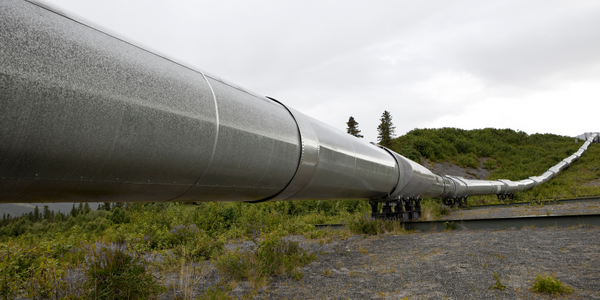Customer Company Size
Mid-size Company
Region
- America
- Pacific
Country
- Australia
- United States
Product
- Outpost 2
- GENESIS32™ OPC Web-enabled HMI/SCADA suite
- PocketGENESIS™
- MobileHMI™
- ReportWorX™
- PortalWorX™
- BizViz™ Productivity Analytics
Tech Stack
- SCADA
- OPC
- ActiveX
Implementation Scale
- Enterprise-wide Deployment
Impact Metrics
- Cost Savings
- Productivity Improvements
Technology Category
- Application Infrastructure & Middleware - API Integration & Management
Applicable Functions
- Facility Management
Use Cases
- Water Utility Management
- Remote Asset Management
Services
- System Integration
About The Customer
MultiTrode is an ISO9001 company that designs and manufactures pump station controllers, RTUs, liquid level sensors, SCADA software, and Web-based monitoring and control. The company has been dedicated to providing technically advanced, yet simple to use, solutions to municipal water and wastewater authorities around the world for over twenty years. MultiTrode's Outpost 2 product is an open and powerful SCADA system designed for the water/wastewater industry. The system interfaces directly with MultiTrode pump controllers and RTUs, providing a wealth of valuable information from every site.
The Challenge
MultiTrode, a company dedicated to providing advanced solutions to municipal water and wastewater authorities, needed a robust SCADA system for their Outpost 2 product. The system needed to be designed specifically for the needs of water and wastewater networks, and include a graphical interface, alarming & trending, a datastore and reporting interface, a master telemetry unit, and remote telemetry units. The system also needed to be open and powerful, interfacing directly with MultiTrode pump controllers and RTUs to provide valuable information from every site. The system also needed to be easy to use, reducing operational and engineering costs by minimizing the need for site visits while improving asset performance.
The Solution
MultiTrode deployed the GENESIS32™ OPC Web-enabled HMI/SCADA suite from ICONICS for their Outpost 2 product. The system includes graphic screens (the HMI [human machine interface]), trends, alarms, and reporting. More advanced users can appreciate multiple other features of GENESIS32 such as drag and drop ActiveX controls for trends and alarms. Users can go into configuration mode, drag an alarm ActiveX onto a page and go back into runtime mode in a few seconds. The same can be done with trend screens. Data points on a screen can be simply dragged onto a trends window to instantly start trending. Alternatively, users can browse through OPC tags and select the ones that are required. Historical tags can be selected just as easily. And all this can be done while the SCADA system is running. Customers can also benefit from additional ICONICS modules for PDAs (via PocketGENESIS™), Mobile Phones (via MobileHMI™), Advanced Reporting (via ReportWorX™), Web-based Organization Portals (via PortalWorX™), and Visual OEE/KPIs/Analysis (via BizViz™ Productivity Analytics).
Operational Impact

Case Study missing?
Start adding your own!
Register with your work email and create a new case study profile for your business.
Related Case Studies.
.png)
Case Study
Improving Vending Machine Profitability with the Internet of Things (IoT)
The vending industry is undergoing a sea change, taking advantage of new technologies to go beyond just delivering snacks to creating a new retail location. Intelligent vending machines can be found in many public locations as well as company facilities, selling different types of goods and services, including even computer accessories, gold bars, tickets, and office supplies. With increasing sophistication, they may also provide time- and location-based data pertaining to sales, inventory, and customer preferences. But at the end of the day, vending machine operators know greater profitability is driven by higher sales and lower operating costs.

Case Study
Automation of the Oguz-Gabala-Baku water pipeline, Azerbaijan
The Oguz-Gabala-Baku water pipeline project dates back to plans from the 1970’s. Baku’s growth was historically driven by the booming oil industry and required the import of drinking water from outside of the city. Before the construction of the pipeline, some 60 percent of the city’s households received water for only a few hours daily. After completion of the project, 75 percent of the two million Baku residents are now served around the clock with potable water, based on World Health Organization (WHO) standards. The 262-kilometer pipeline requires no pumping station, but uses the altitude differences between the Caucasian mountains and the capital to supply 432,000 m³/d to the Ceyranbatan water reservoir. To the people of Baku, the pipeline is “the most important project not only in 2010, but of the last 20 years.”

Case Study
Remote Wellhead Monitoring
Each wellhead was equipped with various sensors and meters that needed to be monitored and controlled from a central HMI, often miles away from the assets in the field. Redundant solar and wind generators were installed at each wellhead to support the electrical needs of the pumpstations, temperature meters, cameras, and cellular modules. In addition to asset management and remote control capabilities, data logging for remote surveillance and alarm notifications was a key demand from the customer. Terra Ferma’s solution needed to be power efficient, reliable, and capable of supporting high-bandwidth data-feeds. They needed a multi-link cellular connection to a central server that sustained reliable and redundant monitoring and control of flow meters, temperature sensors, power supply, and event-logging; including video and image files. This open-standard network needed to interface with the existing SCADA and proprietary network management software.

Case Study
Driving Digital Transformations for Vitro Diagnostic Medical Devices
Diagnostic devices play a vital role in helping to improve healthcare delivery. In fact, an estimated 60 percent of the world’s medical decisions are made with support from in vitrodiagnostics (IVD) solutions, such as those provided by Roche Diagnostics, an industry leader. As the demand for medical diagnostic services grows rapidly in hospitals and clinics across China, so does the market for IVD solutions. In addition, the typically high cost of these diagnostic devices means that comprehensive post-sales services are needed. Wanteed to improve three portions of thr IVD:1. Remotely monitor and manage IVD devices as fixed assets.2. Optimizing device availability with predictive maintenance.3. Recommending the best IVD solution for a customer’s needs.








